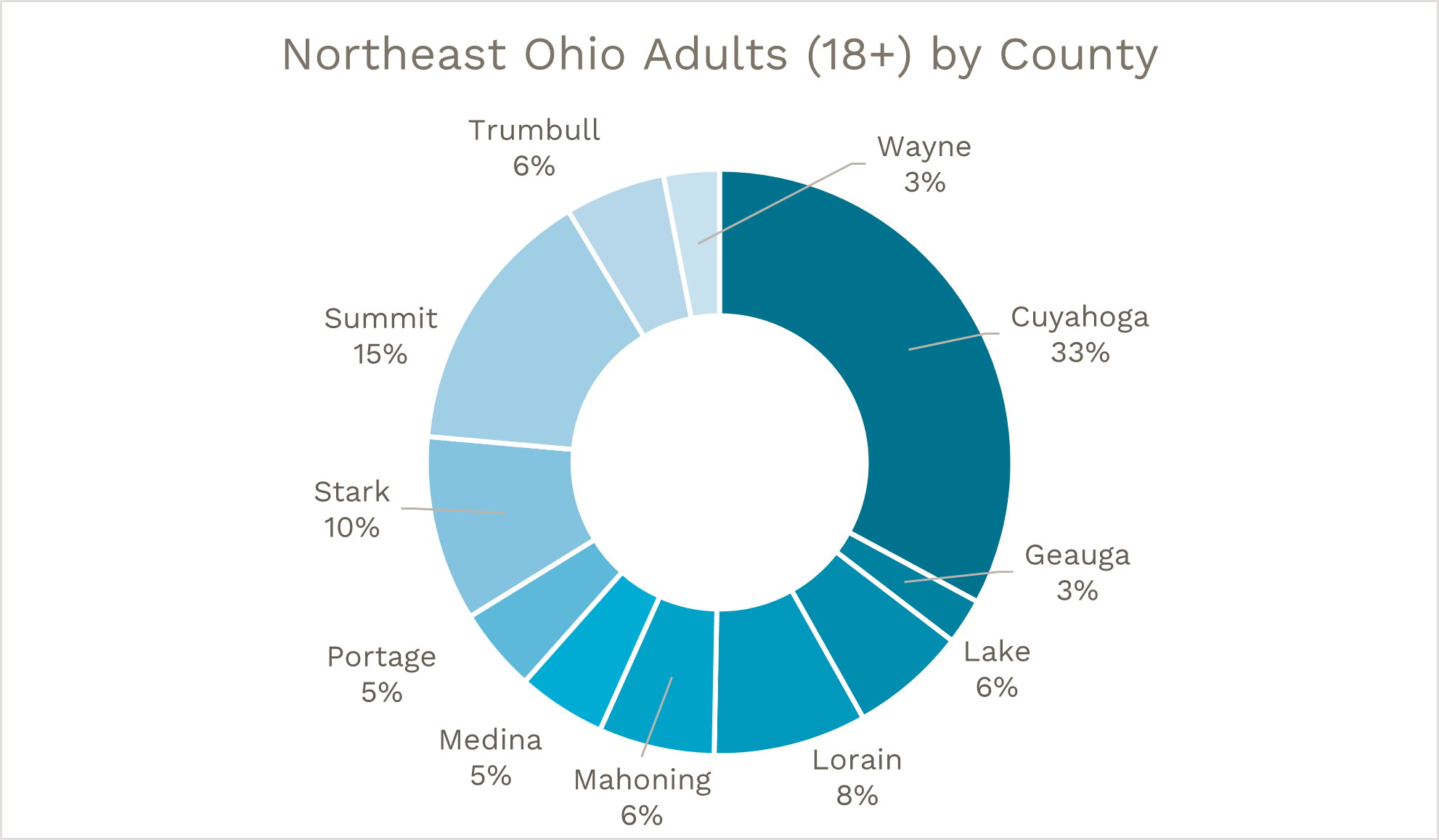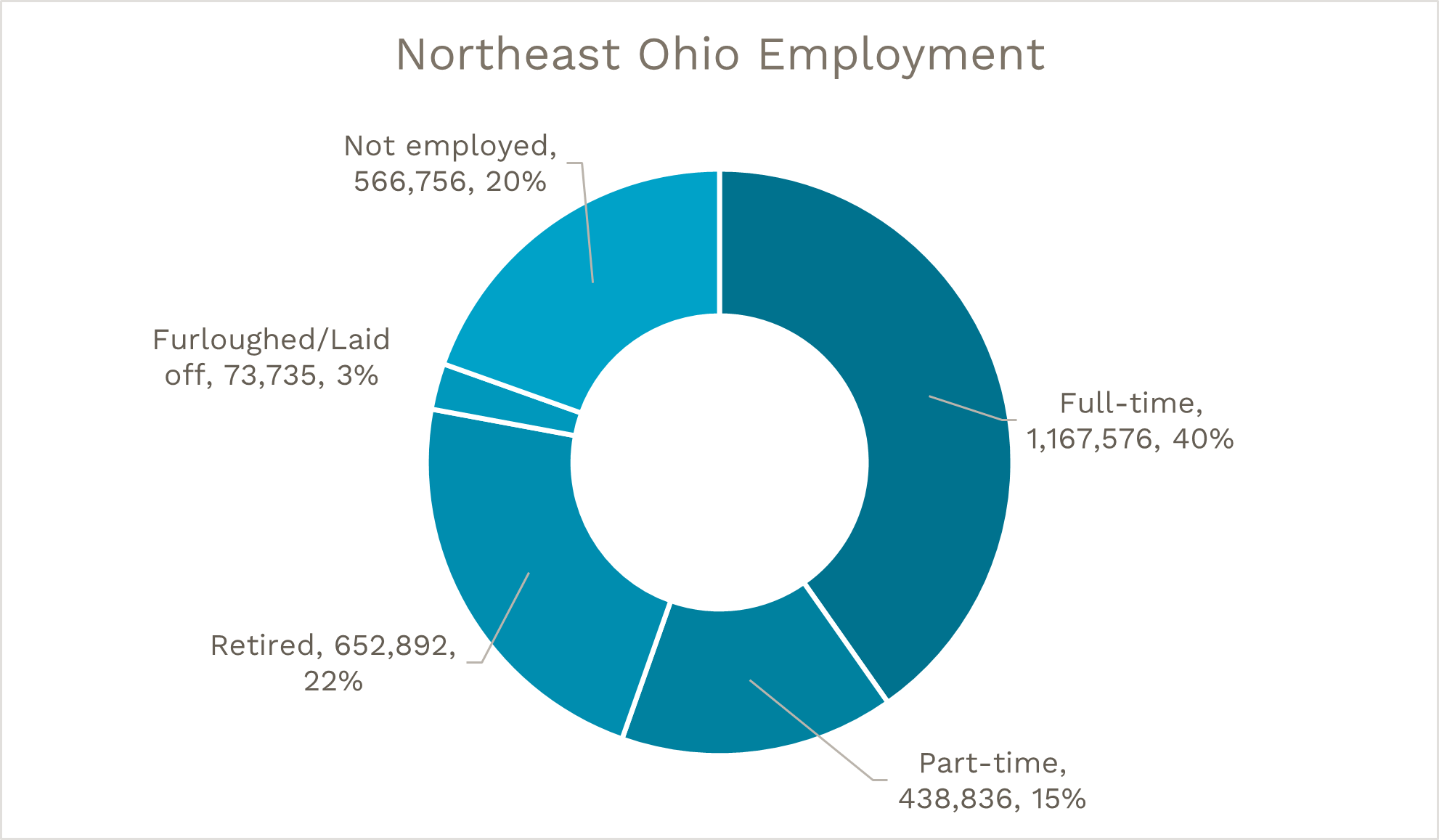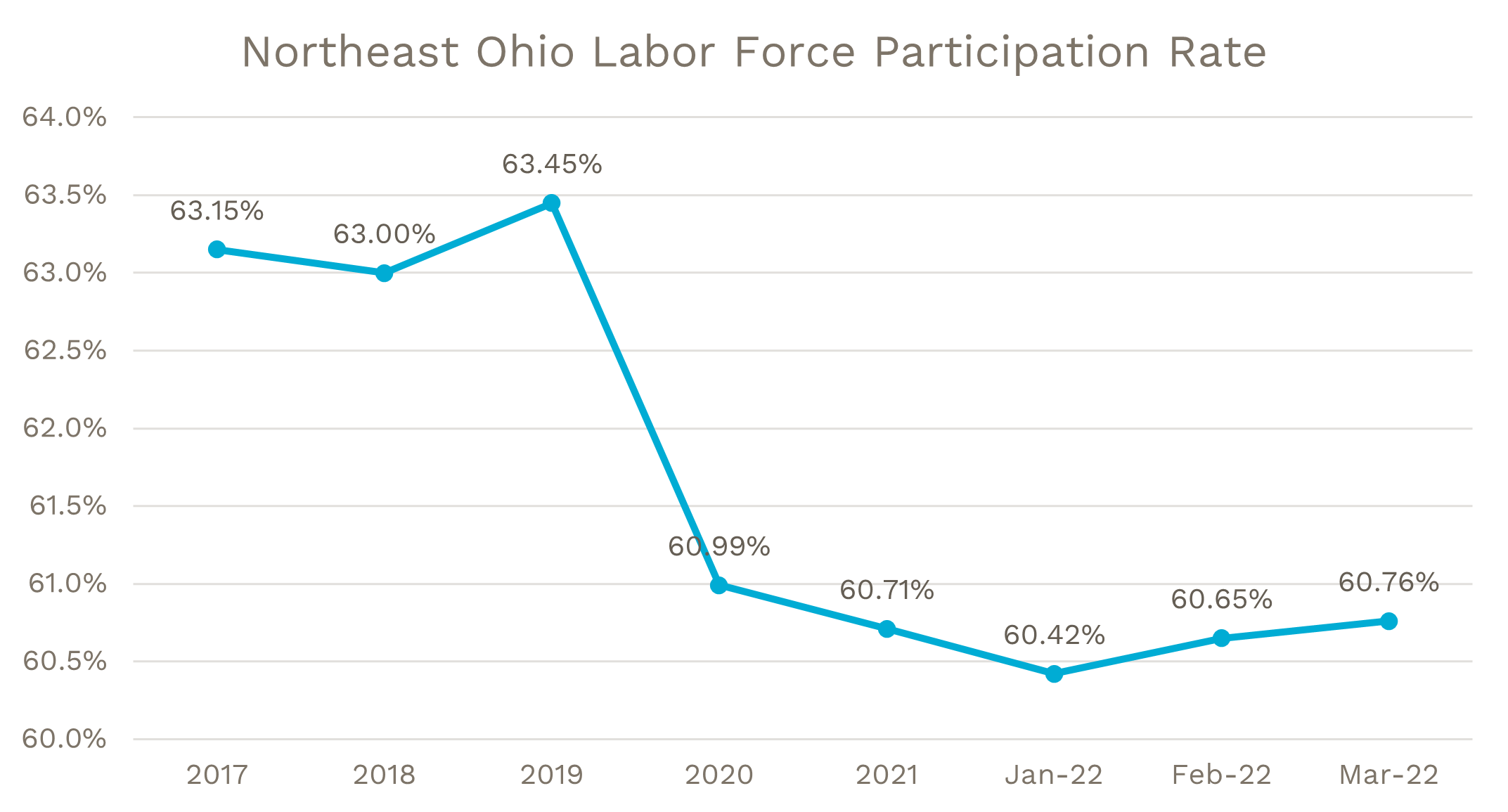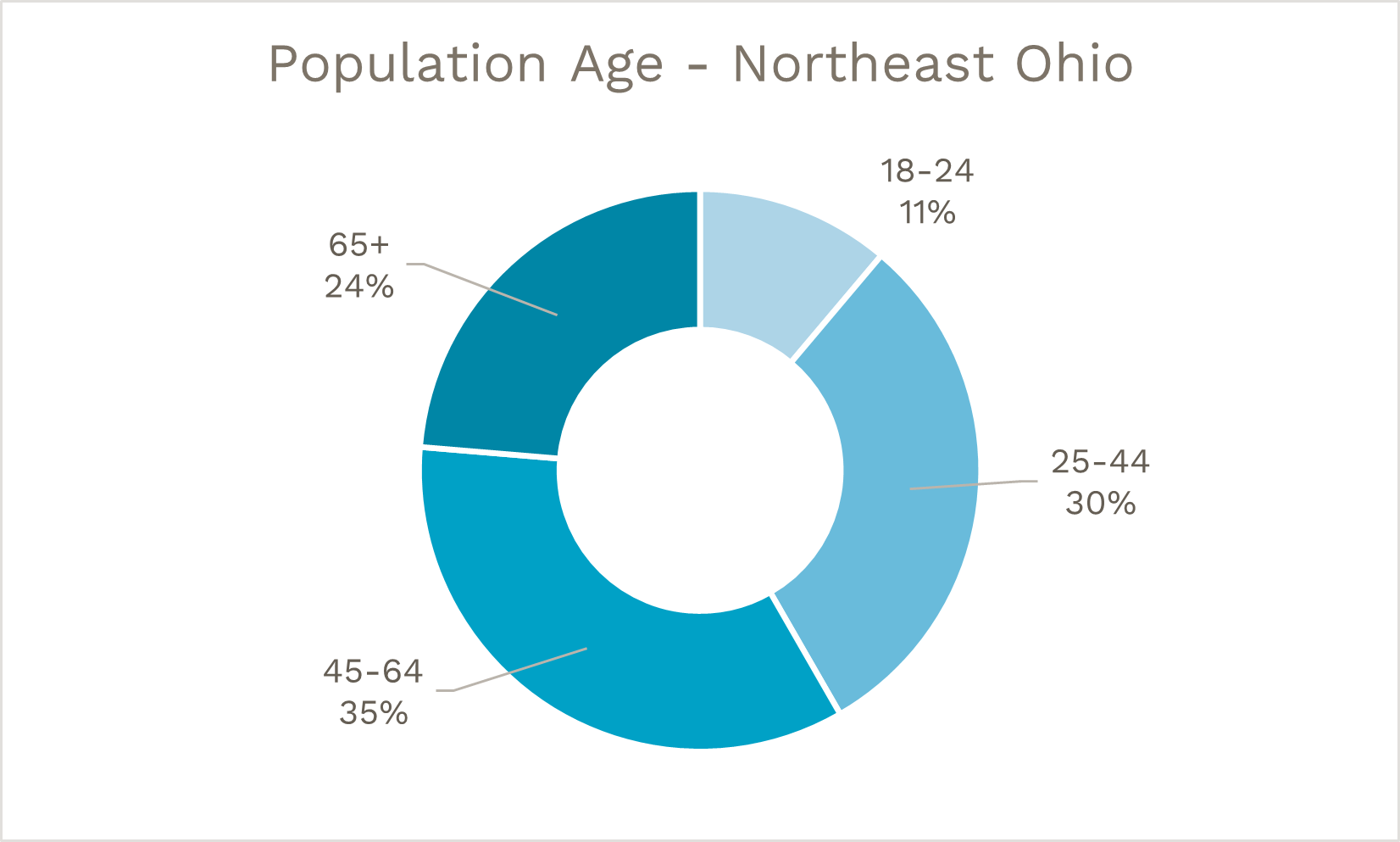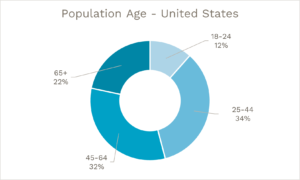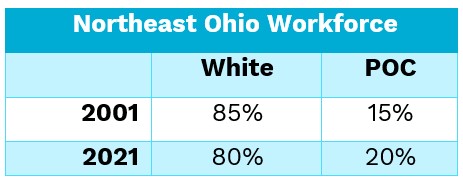Who is the Workforce?
The workforce is aging, becoming more diverse and not making enough money.
Knowing how to reach and retain workers requires understanding who makes up the workforce. The needs and wants of workers are changing because the make-up of the workforce is changing. Here is a demographic snapshot of who is in the workforce in Northeast Ohio today.1
- Unless otherwise noted, all data reflect information from the U.S. Census Bureau 2020 American Community Survey 5-year estimates and covers 11 counties (Cuyahoga, Geauga, Lake, Lorain, Mahoning, Medina, Portage, Stark, Summit, Trumbull, and Wayne).
- Source: Lightcast (formerly EMSI/Burning Glass)
- Source: Lightcast, 2001-2021. Data encompasses the following 18 counties: Ashland, Ashtabula, Columbiana, Cuyahoga, Erie, Geauga, Huron, Lake, Lorain, Mahoning, Medina, Portage, Richland, Stark, Summit, Trumbull, Tuscarawas, Wayne.
- People of color includes individuals who identify as Hispanic or Latino, Black or African American, American Indian or Alaskan Native, Asian, Native Hawaiian or Other Pacific Islander, or Two or More Races.
- Source: U.S. Census Bureau, Current Population Survey, 2020 Annual Social and Economic Supplement

